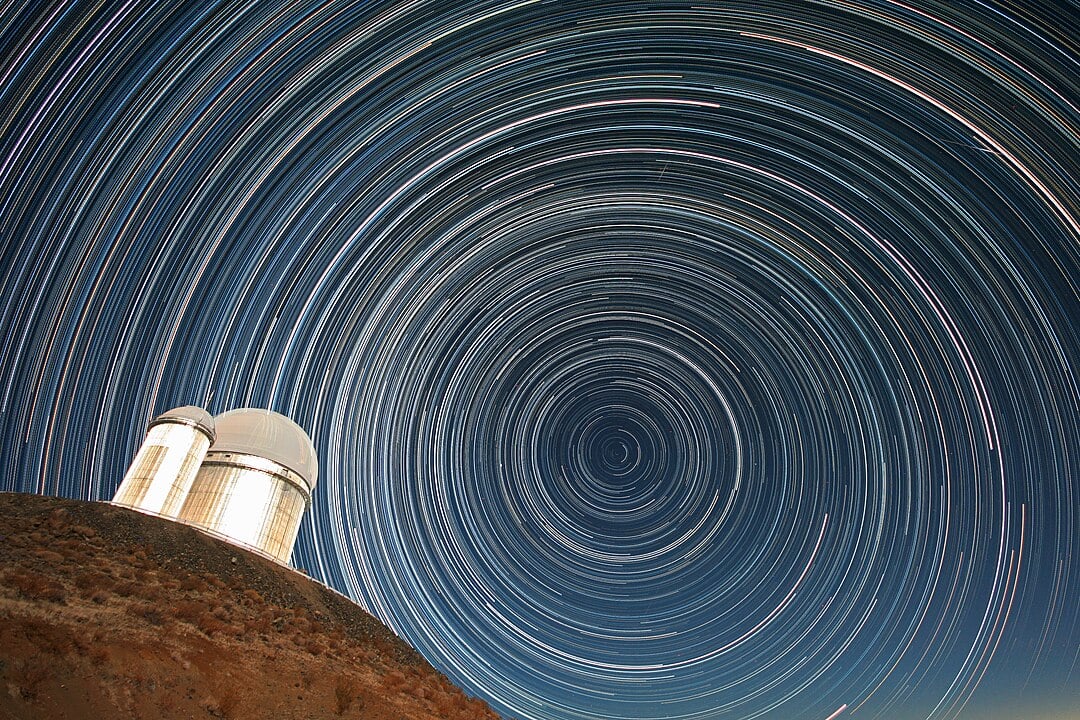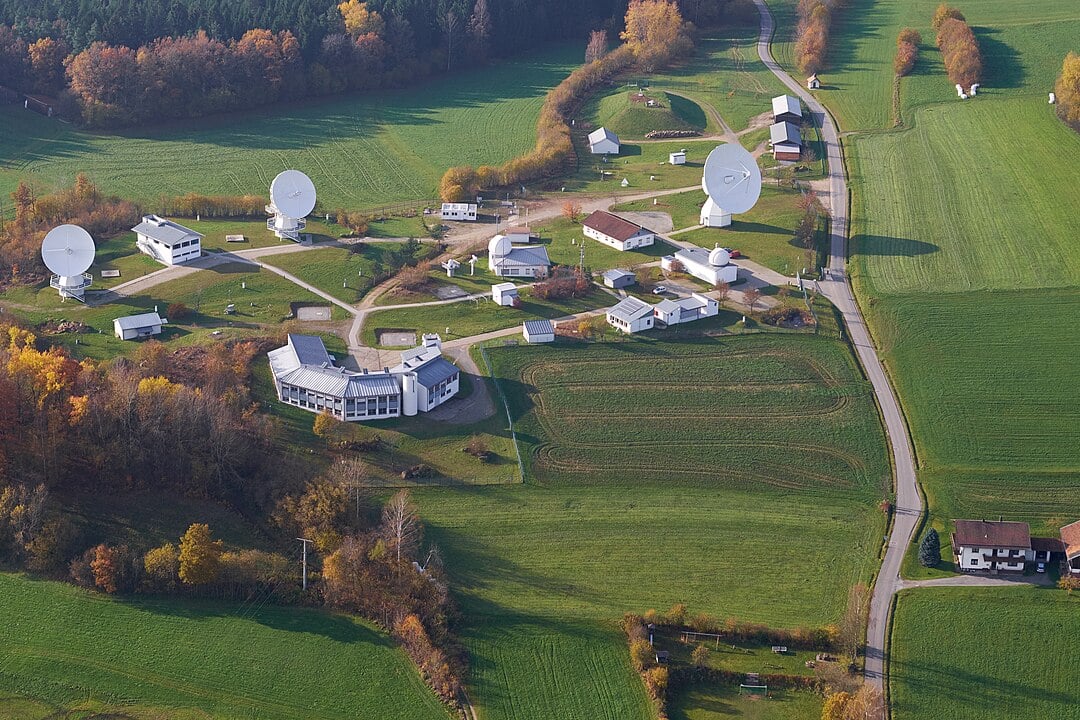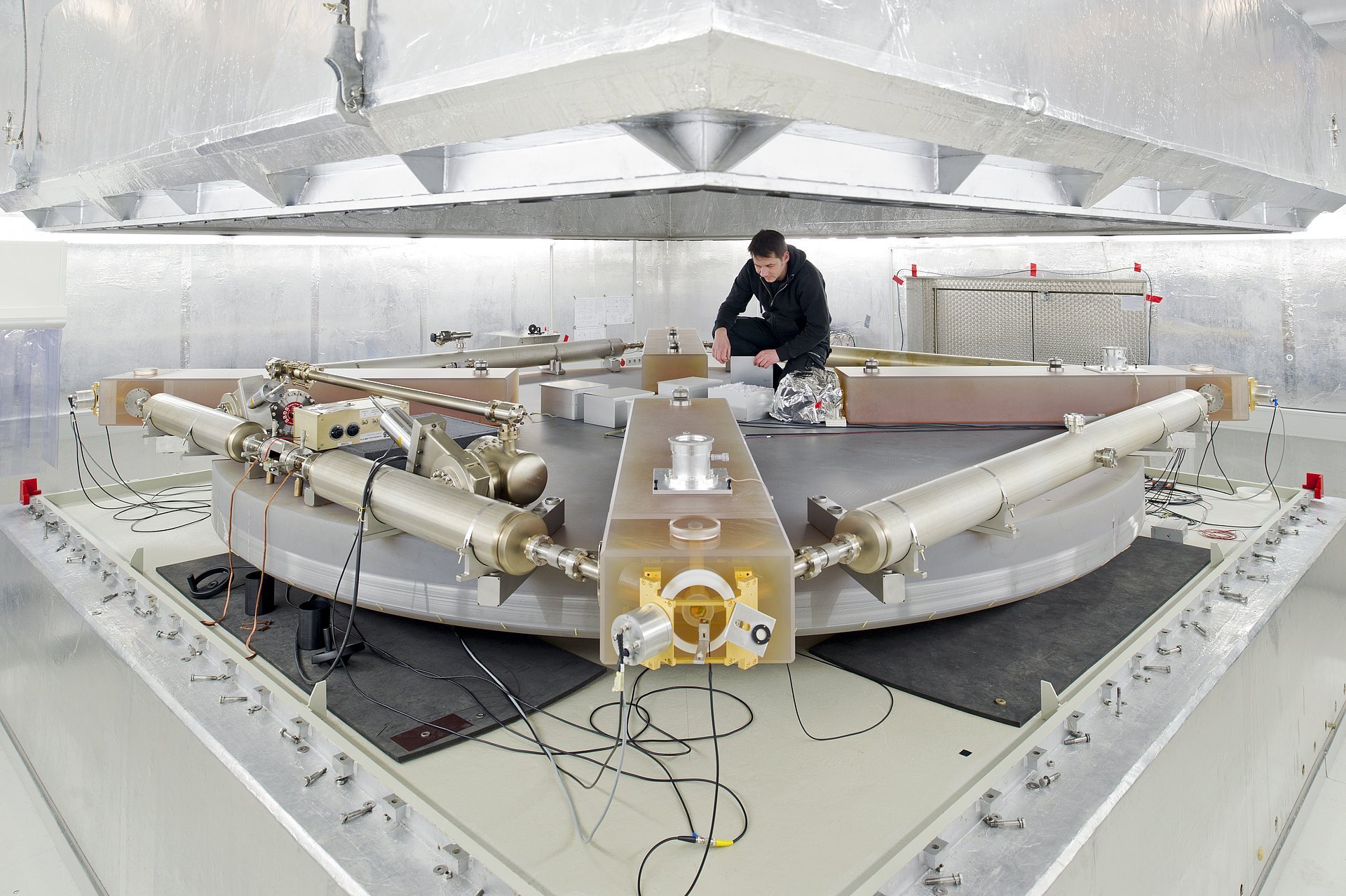Most people are familiar with the fact that the Earth spins on its axis once every day. The spin however, isn’t as steady as you might think. Like a spinning top slowing down, Earth’s axis wobbles, scribing out a circle on the night sky that currently points very close to the Pole Star in the northern hemisphere. The wobble occurs because Earth isn't a perfect sphere but bulges slightly at the equator. When the Sun and Moon pull on this bulge with their gravity, they create a force that tries to tilt Earth's axis. However, because Earth is already spinning, this tilting force doesn't simply tip the planet over. Instead, it causes the axis to trace out a slow circular wobble in the sky, much like a spinning top wobbles as it slows down. This wobble takes approximately 26,000 years to complete one full cycle.
 Star trails over the European Southern Observatory can be seen here revealing the direction that the Earth's axis of rotation points (Credit : ESO/A.Santerne)
Star trails over the European Southern Observatory can be seen here revealing the direction that the Earth's axis of rotation points (Credit : ESO/A.Santerne)
A team of researchers from the Technical University of Munich (TUM) and the University of Bonn have been studying this wobble. They used a highly sensitive ring laser at TUM's Geodetic Observatory in Wettzell which can achieve measurements 100 times more accurate than any previous study. Unlike traditional methods that require external reference points, typically an astronomical object, this ring laser operates as an inertial sensor, measuring Earth's rotation independently without looking at anything in the sky.
"What our ring laser can do is unique worldwide. The precise measurement of the fluctuations helps us better understand and model the Earth system with high accuracy.” - Lead author Professor Ulrich Schreiber from the Technical University of Munich.
Superimposed on this slowly drifting wobble are smaller oscillations called nutations which are wave like movements caused by the gravitational pull of the Sun and Moon. These gravitational forces sometimes reinforce or weaken each other, tugging on Earth's axis in complex patterns. The most prominent nutation has a period of 18.6 years, but there are many shorter ones with weekly or even daily fluctuations. As a result, Earth's axis doesn't wobble evenly but with constantly varying intensity.
The ring laser at Wettzell measured all these effects directly and continuously over a 250 day period with a level of accuracy previously unheard of for inertial sensors. Traditionally, this required Very Long Baseline Interferometry, a technique using networks of large radio telescopes on different continents. The process is complex, expensive, and can take days or weeks to produce results. The ring laser, by contrast, achieved this independently in a relatively small underground facility, with temporal resolution of less than an hour and results available immediately rather than after lengthy processing.
 The Geodetic Observatory Wettzell, 2014 (Credit : Uwe Hessels)
The Geodetic Observatory Wettzell, 2014 (Credit : Uwe Hessels)
The ring laser functions by sending laser beams around a closed path in opposite directions. When the apparatus rotates along with Earth, one beam travels slightly farther than the other, creating a measurable difference in their frequencies. This effect, known as the Sagnac effect, allows the ring laser to detect even tiny changes in Earth's rotation and axis orientation.
Looking ahead, the team want to make improvements to the ring laser believing that enhancements will increase its sensitivity by a factor of ten. They hope that, if this upgrade is achieved, they will be able to measure the spacetime distortion caused by Earth's rotation. This would allow direct testing of the Lense-Thirring effect, the "dragging" of space predicted by Einstein's general relativity. This effect has been observed before for example by Gravity Probe B which detected the distortions back in 2011. With the ring laser, this effect could be detected at the surface of the Earth without the use of expensive satellites in orbit.
Source : No radio astronomy needed: Ring laser measures Earth's axis wobble with unprecedented precision
 Universe Today
Universe Today
